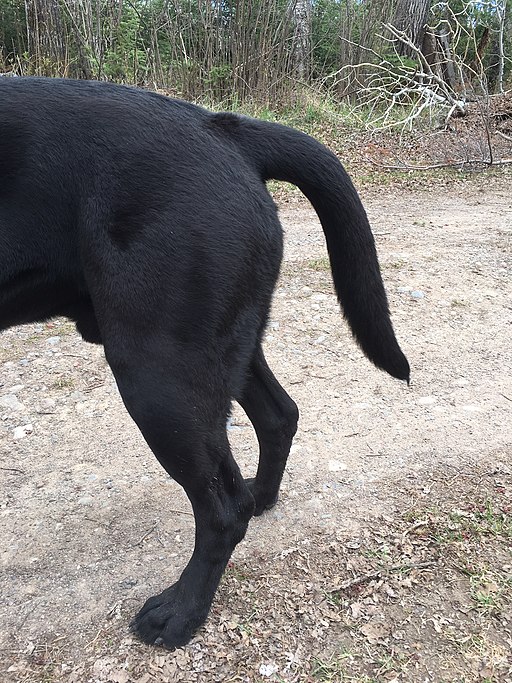Dogs use their tails to communicate, and a happy wag from your best pal may be one of your favorite sights. So if your dog stops wagging their tail altogether, you’ll likely notice right away. A lost wag can be a sign of limber tail syndrome, which also goes by names like swimmer’s tail, rudder tail, broken wag, and many others. Basically, limber tail syndrome is a sprain or strain of the muscles in a dog’s tail.
The condition’s scientific name is acute caudal myopathy. “Acute” means that it comes on suddenly. “Caudal” means that it has to do with the tail, and “myopathy” means that it’s a muscle problem.
It’s upsetting to see a dog with limber tail syndrome, but the good news is that most recover before long with some rest (and, if necessary, medication). Still, it’s best to bring any dog with tail trouble to the vet for a full exam to make sure you’re giving them the care they need and ruling out more serious issues. Here’s a full rundown of how to spot limber tail syndrome, what causes it, and how to help your dog get their wag back.

What are the signs of limber tail syndrome in dogs?
Dogs with limber tail syndrome may show the following signs:
- A limp tail
- Inability to wag their tail
- Trouble squatting when it’s time to go to the bathroom
- Difficulty getting up
- Restlessness
- Lethargy
- Licking, biting, or scratching at their tail
- Decreased appetite
- Whining, crying, yelping, or otherwise indicating that they’re in pain
The main sign of limber tail syndrome is a limp tail; a dog who shows only one or a few of the above signs may be suffering from the condition, even if not all of the signs are present.
What causes limber tail syndrome?
Broadly speaking, limber tail syndrome is caused by overuse of the tail. The reason it’s sometimes called “swimmer’s tail” is because it often arises when a dog swims much more than they’re used to. But it can happen during any physical activity that involves a lot of tail wagging.
Dogs can also develop limber tail syndrome after spending time in very cold air or water, or if they spend too long confined to a crate (dogs use their tails for balance, and may have more trouble doing this when they spend an extended time in a small space).
How do veterinarians diagnose limber tail syndrome?
Your vet will probably ask you what your dog’s been up to lately, as limber tail syndrome often follows activities like those listed above. They’ll also do a thorough physical examination, during which they’ll feel the tail and see what causes your dog discomfort. This can help them confirm that your dog is facing limber tail syndrome, and rule out other causes of their pain and difficulty wagging.
In many cases, this discussion and examination will be enough to make a diagnosis—but the vet may recommend X-rays or an MRI if they suspect a different type of injury. The possibility that your dog’s tail hurts due to a more serious injury or illness is one important reason to visit a vet when you think they may have limber tail syndrome.
How do you treat limber tail syndrome?
The essential part of any recovery from limber tail syndrome is rest. Your vet will tell you how much rest they think your dog needs, but usually it will be somewhere between a few days and two weeks, depending on the severity of your dog’s strain or sprain. The vet may also recommend that you apply a warm compress to your dog’s tail.
Also depending on the severity of your dog’s limber tail syndrome, the vet may prescribe non-steroidal anti-inflammatory drugs and/or other pain medications.
Is there any way to prevent limber tail syndrome?
You can’t guarantee that your dog avoids limber tail syndrome, but you can try to protect them by eschewing exercise in very cold temperatures, and treating your dog the way you would a person who’s getting used to a physical routine—making sure that you ramp up their activity gradually and giving them breaks to rest.
If your dog does get limber tail syndrome, don’t panic. It’s very treatable, and is unlikely to leave any lasting impact on them. Just get in touch with your vet and be ready to help your pal rest and recover.









